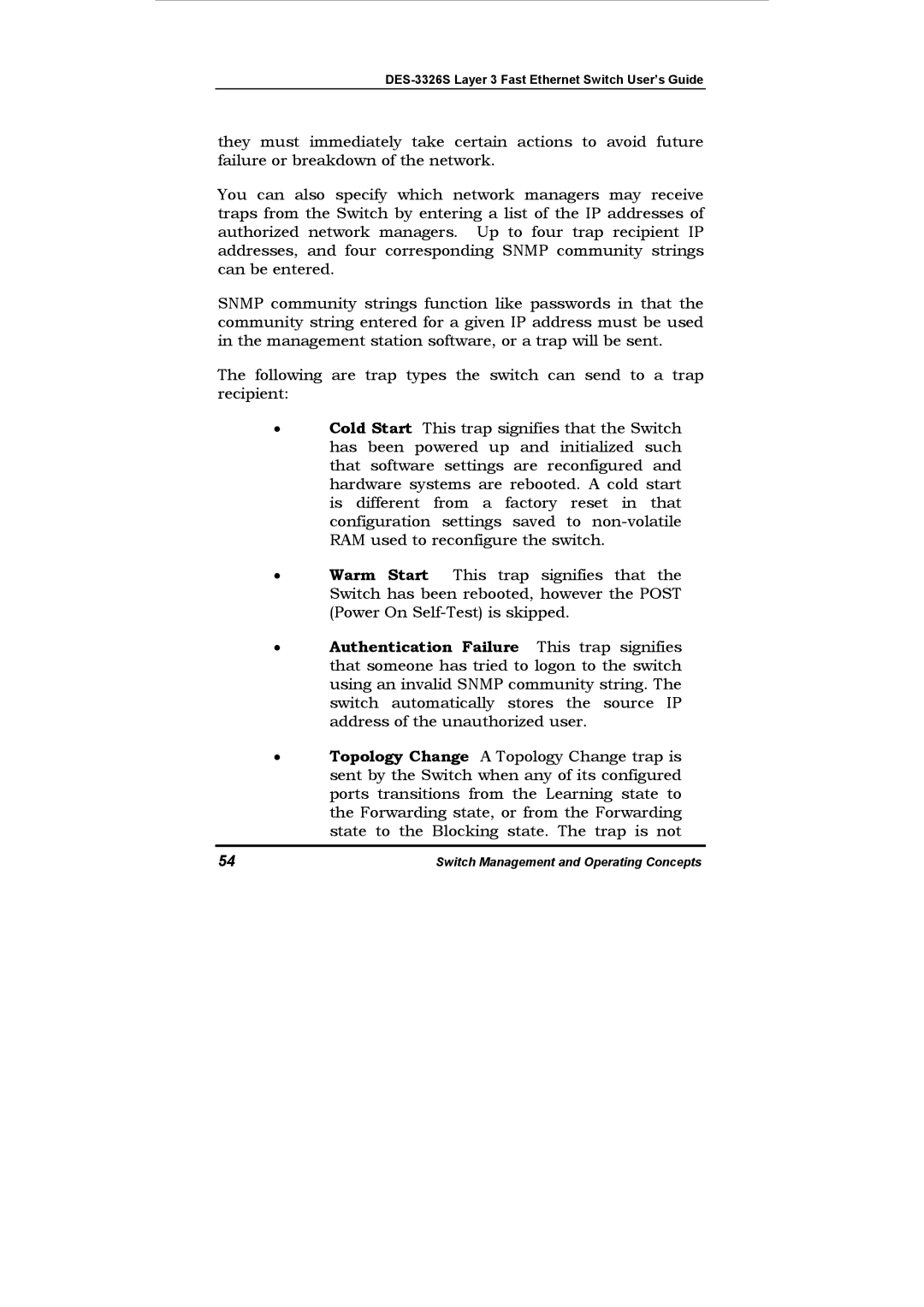
DES-3326S Layer 3 Fast Ethernet Switch User’s Guide
they must immediately take certain actions to avoid future failure or breakdown of the network.
You can also specify which network managers may receive traps from the Switch by entering a list of the IP addresses of authorized network managers. Up to four trap recipient IP addresses, and four corresponding SNMP community strings can be entered.
SNMP community strings function like passwords in that the community string entered for a given IP address must be used in the management station software, or a trap will be sent.
The following are trap types the switch can send to a trap recipient:
•Cold Start This trap signifies that the Switch has been powered up and initialized such that software settings are reconfigured and hardware systems are rebooted. A cold start is different from a factory reset in that configuration settings saved to
•Warm Start This trap signifies that the Switch has been rebooted, however the POST (Power On
•Authentication Failure This trap signifies that someone has tried to logon to the switch using an invalid SNMP community string. The switch automatically stores the source IP address of the unauthorized user.
•Topology Change A Topology Change trap is sent by the Switch when any of its configured ports transitions from the Learning state to the Forwarding state, or from the Forwarding state to the Blocking state. The trap is not
54 | Switch Management and Operating Concepts |
